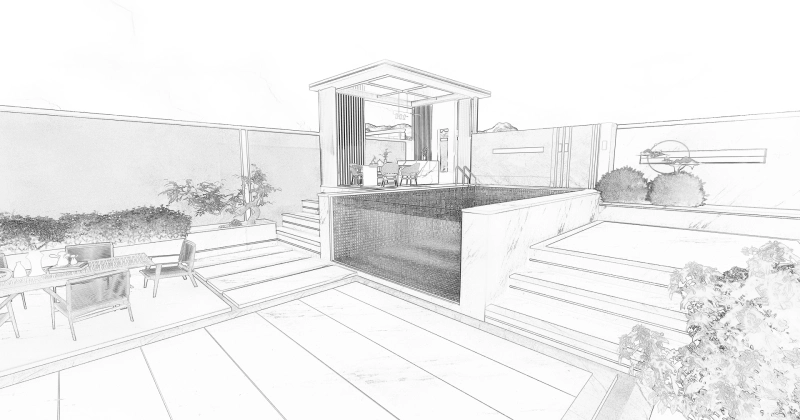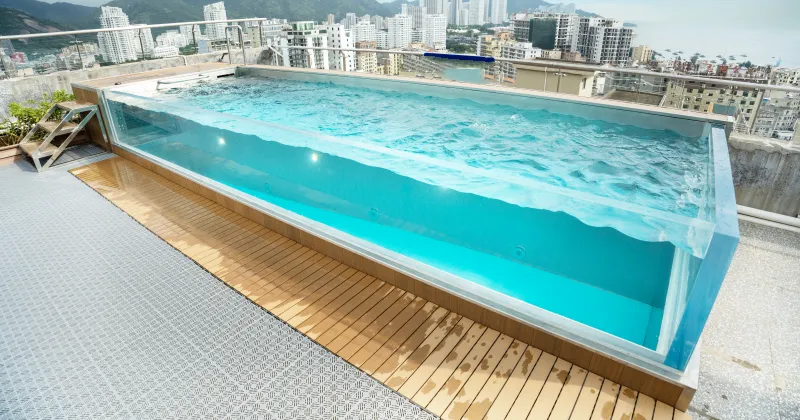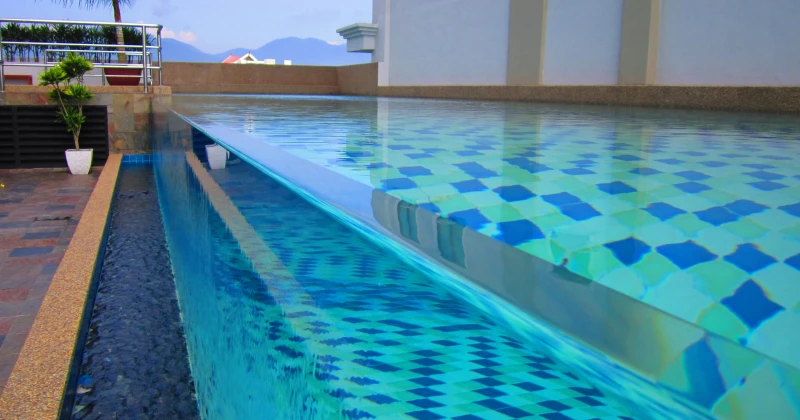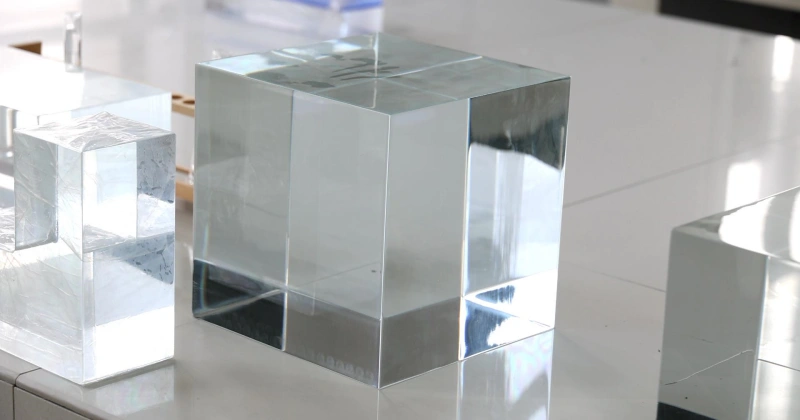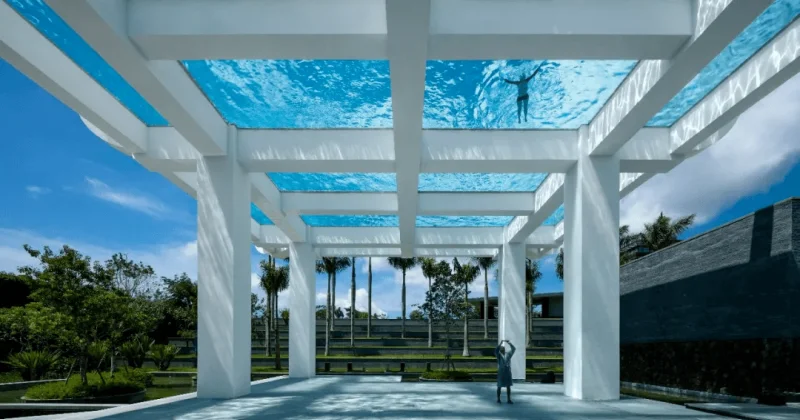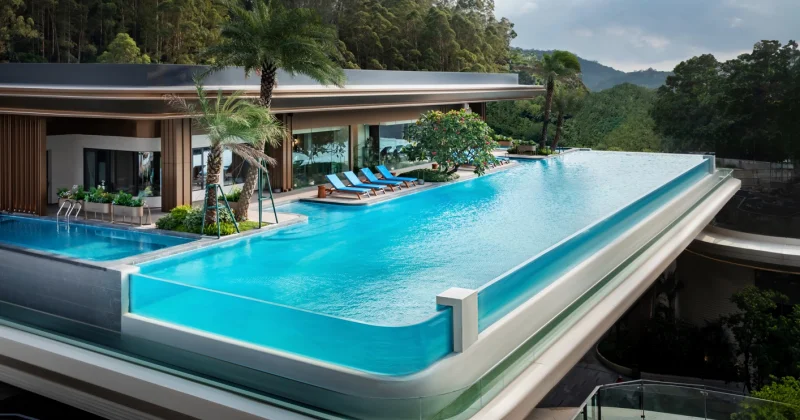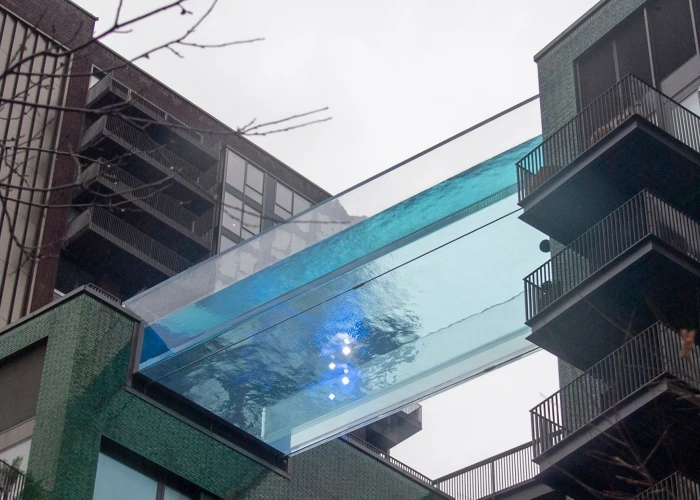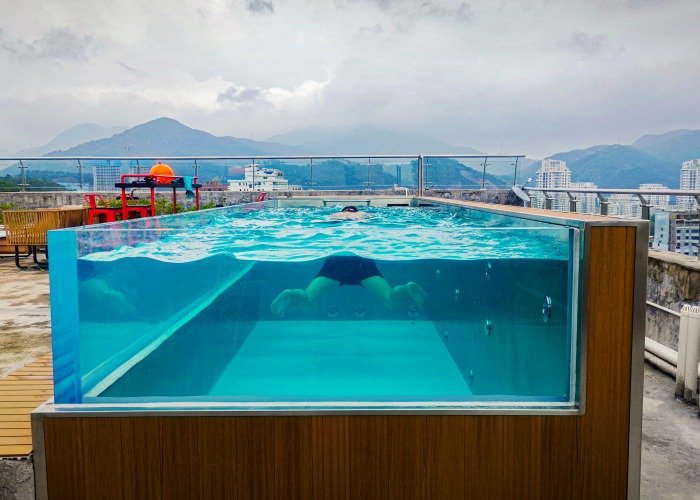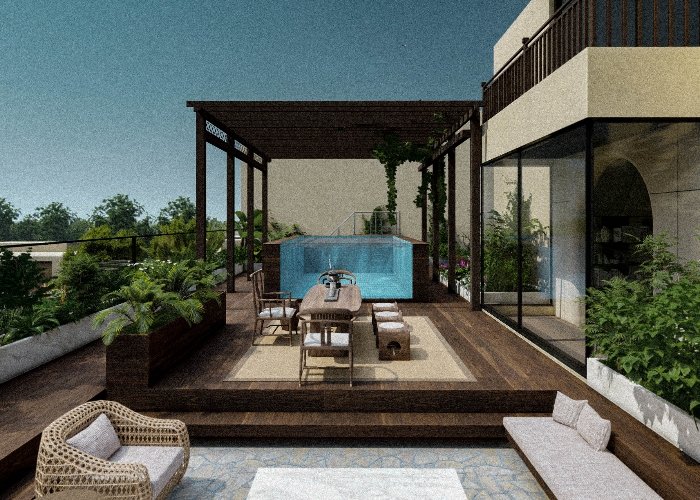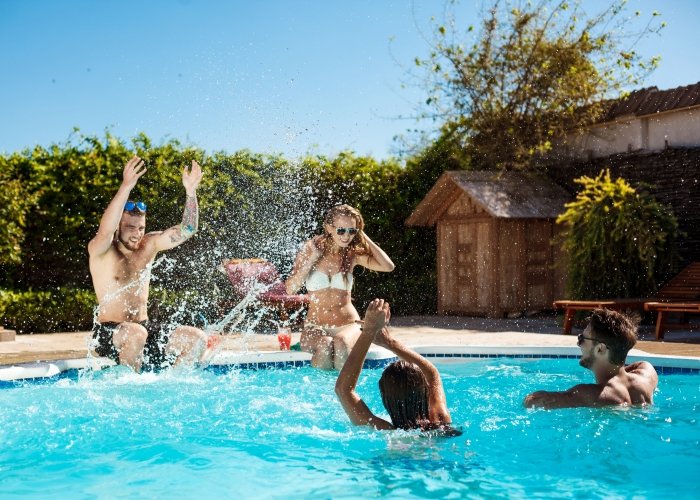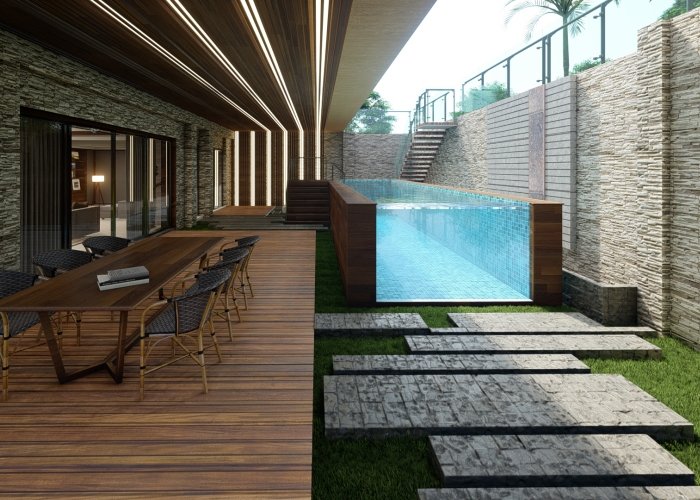
Want to Partially Bury Metal Pools? Semi-Inground Design Guide
Backyard pool installation has become a trending practice among homeowners who want their pool to be as aesthetically pleasing, functional, and affordable as possible. One question frequently arises during this journey: Can metal pools be partially buried for a semi-inground look? The answer is a resounding yes, and this creative offering is changing how people design their outdoor spaces.
Metal pools can be partially buried, creating a sleek, semi-inground aesthetic that fits between affordability and high-end design.
Keep reading!
What Are Semi-Inground Metal Pools?
Semi-inground pools offer the best of both worlds, marrying above-ground pools' cost savings and ease of installation to the polished, integrated look of inground designs. By partially burying a metal pool — 1/3 or 2/3 below ground (or less or more depending on the design) homeowners can seamlessly transition between the pool and the landscaping.
Metal pools, typically made from galvanized steel or aluminum, are one of the best candidates for the process as they are highly resistant to corrosion and structurally sound. If installed correctly, they can replicate the sophistication of permanent inground pools without the steep installation cost or lengthy construction timelines.

Benefits of Partially Burying Metal Pools
A half-submerged above-ground metal pool completely changes the game of backyard bliss by combining the cost-effectiveness of above-ground designs with the sophistication of inground styles. Partial burial offers eye-pleasing symmetry, utility, and cost savings while avoiding the drawbacks of traditional pools. This cutting-edge hybrid changes how you see and use your outside space without tipping the aesthetic or budget balance.
Cost Savings
Not only are semi-above-ground metal pools a lot more affordable than full-on inground pools, but they also offer an aesthetic finish to your yard simultaneously! Inground pools often demand considerable excavation, reinforced concrete, and intricate plumbing systems, driving prices up to $50,000 or higher. In contrast, that leaves you with a built-in pool, and burying all your metal pool cuts the labor and material cost tremendously. Because only part of the pool is below ground, the excavation is minimal, and the robust metal structure means there‘s no need for expensive concrete shells.
The cost of a semi-inground installation can vary, but most homeowners can expect to pay somewhere between $10,000 and $25,000, with price factors such as size and design features like decking or landscaping. This cost-efficient nature persists in long-term maintenance, as metal pools usually need fewer repairs than concrete or fiberglass pools.
Enhanced Aesthetics
One frequent complaint about above-ground pools is their functional appearance, which can conflict with modern gardens or patio designs. By partially burying a metal pool, you can have a polished, semi-custom look that gets around this problem. The structure integrates seamlessly into its environment by burying one-third to two-thirds of the pool’s height deep in the ground.
Homeowners may want to further complement this integration by applying stone veneers, wooden decking, or landscaping around the exposed walls. For instance, cascading plants or elevated flower beds can soften the pool’s edges, and a wraparound deck creates a unified outdoor living space.
Faster Installation
Time is of the essence with pool projects, and semi-inground metal pools have a clear advantage here. In-ground installations may take weeks—or even months—due to excavation, permits, and concrete curing times. On the other hand, semi-round installations can take a matter of days. They follow landscape and needs-based design principles, requiring minimal excavation, simple installation of pre-engineered metal panels, and backfill around the structure.
Homeowners can get in the water much sooner because there’s no waiting period for concrete to cure or complicated subterranean piping. This quick turnaround is perfect for anyone planning summer get-togethers or wanting to enjoy their outdoor space to the max without enduring a lengthy build process.
Flexibility
Though generally viewed as permanent fixtures, semi-inground metal pools provide a surprisingly flexible installation option. Relocating is possible, but careful disassembly and excavation are the work of professionals. The flexibility goes beyond mobility. Homeowners can more easily update the area surrounding a pool—expanding decking, adding water features, or landscaping—without the limits of a fully buried structure. This flexibility is ideal for families who may want to reclaim their yard later on or try out changing design trends.
Durability
Made of high-quality metal such as galvanized steel or aluminum, metal pools are designed to endure extreme conditions. Its corrosion-resistant coatings are immune to rust, even when half-buried in wet soil. Metal structures do not warp from thermal fluctuation (like wood or plastic) or UV damage, guaranteeing longevity. Proper installation—including an a drainage layer of gravel and soil stabilizers—provides additional protection against shifting or water damage.
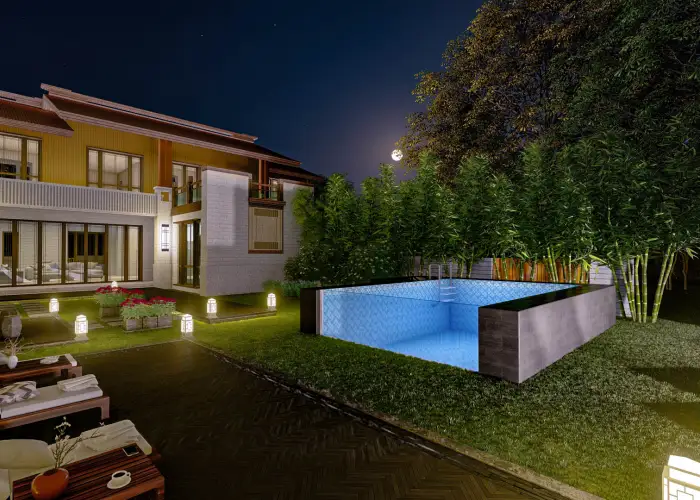
Key Considerations Before Installation
Although semi-inground metal pools provide many benefits, they can also present some challenges. Adequate planning is critical to prevent costly errors:
- Soil and Drainage: The excavation site must have solid, well-draining soil; otherwise, a shifting foundation or pooling around the pool walls will result. If your backyard has heavy clay or loose, sandy soil, you may need additional reinforcement.
- Local Building Codes: While all states require general building permits, specific regulations vary by state. Certain locales set limits on pool burial depth or safety fencing. Considering these regulations before investing in a semi-inground pool can save you from future complications.
- Corrosion Risks: While metal pools are built for moisture exposure, submersion increases their chances of contact with soil and groundwater. Choose powder-coated or galvanized steel and provide proper drainage to minimize rust.
- Professional vs. DIY Installation: Partially buried pools can be a DIY project for you if you have decent hands-on experience, but if you are new to the DIY game, then choosing a professional installation service will ensure structural integrity and adherence to local codes.
Step-By-Step Installation
Installing a semi-inground, metal pool in your backyard requires you to be mindful of various things. While the procedure is not as serious as with entirely submerged pools, every single phase is essential in ensuring structural integrity, enduring life, and visual appeal.
Here are the leading installation steps, what you can expect , and why precision is critical at every point.
Site Preparation
Start by clearing rocks, roots, and debris from the area. Use stakes and string to mark the pool’s exact footprint, ensuring it is aligned with how the yard is laid out. Create the trench to your desired depth (generally 18–36 inches), and get the bottom as level as you can. It is the basis for an installation that makes the pool both secure and people-friendly.
Soil Stabilization
Put back the excavated soil from the trench and compact it with a mechanical tamper. This eliminates air pockets and prevents future soil shifting. Spread gravel 2–4 inches deep on top of the sand to improve drainage and limit moisture buildup against the pool walls. It protects the soil from blows, erosion, and seeping water.
Pool Assembly
Using the manufacturer's instructions, put together the pre-cut metal wall panels, securing them with vertical braces for added support. Before continuing, check that all connections are tight and level. When assembled correctly, the pool retains its shape while buried under soil pressure.
Partial Burial
Carefully lower the completed pool into the hole and use a level to ensure it‘s even. A layer of gravel or sand should be used to fill in the space between the pool walls and the surrounding soil, compacted down as you go so as not to lose the stability you have laid. This makes the pool more permanent but allows it to be drained efficiently.
Liner and Final Touches
Next, the vinyl liner is attached, smoothing out creases to ensure the final product is smooth to the touch. Gradually fill the pool with water and adjust the liner as needed. Finally, install decking, stairs, or landscaping around the exposed edges for a finished integration into the surrounding outdoor area.

Semi-Inground Metal Pool Design Ideas
Here are some design ideas to further your aesthetic on your semi-inground pool:
- Attached Decking: You might use wood or composite decking around the raised portion of your pool to create a cohesive look with your other outdoor entertainment spaces.
- Rock or Stone Accents: Natural stone veneers assist in camouflaging the metal walls and attaching the pool to its surroundings.
- Integrate Landscaping: Foliage around the edges can help soften the aesthetic of a pool; shrubs, flowers, or ornamental grasses break up the concrete.
- Lighting: Instal LED lights around the pool walls or on the ground for night ambience.
For more customizable options for homeowners, AuPool offers a variety of semi-inground metal pools, many of which feature finishes and accessories designed to enhance backyard aesthetics. Our durable, corrosion-resistant models are designed to function properly when partially buried and are ideal for budget-minded renovators.
Maintenance Tips for Longevity
You should frequently inspect your semi-inground metal pool for uneven surfaces, fissures, and rust.
Check the pool’s walls, especially the buried portions, regularly (for seal corrosion or soil erosion), and resolve all issues promptly to avoid jeopardizing the structure.
Test the water’s pH, alkalinity, and sanitizer levels weekly to keep it balanced — this keeps swimmers safe and the liner and metal components safe from degradation.
Additionally, drainage systems in the pool area should be clear of debris to prevent water from pooling against the walls, which can hasten rust or weaken the nearby soil.
If maintained properly, you can extend the life of your pool, plus your pool tends to look and perform great for many years.

Conclusion
A partial burial of a metal pool is an attractive, economical way to achieve the inground pool look without the expense of heavy lifting. Homeowners can enjoy a structure that will last long and become an eye-catching focal point for visitors.
Whether you take the DIY route or hire professional installers, this hybrid installation method presents endless opportunities to construct an outdoor look that will make your backyard look like a resort. If your semi-inground metal pool is well planned and creatively designed, it will be a relaxing and enjoyable aspect of your yard for years to come.






